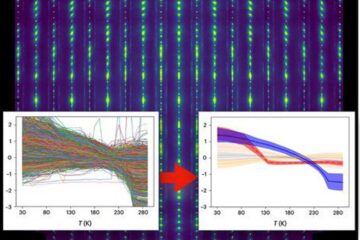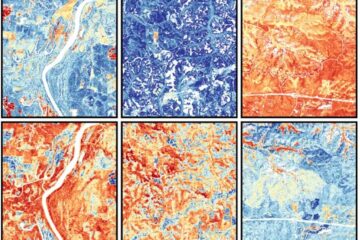Jefferson scientists find calcium is key to slowing colorectal cancer growth

Allowing calcium to get inside colorectal cancer cells may be one way to stop their growth.
Researchers at Jefferson Medical College and the Kimmel Cancer Center at Thomas Jefferson University in Philadelphia knew that the same bacterial toxin that causes traveler’s diarrhea can stem the growth of metastatic colorectal cancer cells. Now, they may have found out how.
The scientists discovered that the toxin appears to open a cellular door, permitting calcium into tumor cells, which in turn somehow slows cell division. The discovery may lead to new methods of treating colorectal cancer, perhaps by combining the toxin with chemotherapy drugs and other agents.
GianMario Pitari, M.D., Ph.D., assistant professor of medicine at Jefferson Medical College of Thomas Jefferson University, Scott Waldman, M.D., Ph.D., Samuel M.V. Hamilton Family Professor of Medicine and director of the Division of Clinical Pharmacology at Jefferson Medical College, and their co-workers report their findings February 10 in the Proceedings of the National Academy of Sciences Online Edition.
Drs. Waldman and Pitari had previously shown that when the toxin, known as ST, hooks up with a receptor, GCC, on the surface of metastatic colorectal cancer cells, metastatic colorectal cancer cell growth slows considerably. Treating the cells with ST didn’t kill them, but rather lengthened the time of the cell growth cycle, slowing the cells’ growth and spread. The current research takes this work one step further, providing one potential mechanism for this growth inhibition.
“Dietary calcium is the mediator of this antiproliferative effect,” says Dr. Pitari, who adds that dietary calcium has been believed to have a role in preventing the formation of polyps and cancer in the colon. “Now, we show that one of the mechanisms by which dietary calcium works is through this pathway. The toxin activates the receptor, GCC, causing an opening of a channel and an influx of calcium into the tumor cell. This influx causes a reduction of cancer cell growth. Somehow there is an interaction between the toxin and dietary calcium in blocking the growth of the tumor.
“The mechanism by which this occurs is very specific and a completely new pathway,” he says. “No one has linked this pathway to antiproliferation and inhibition of tumor DNA synthesis,” he notes.
In the laboratory, Drs. Pitari, Waldman and their co-workers, including internationally renowned electrophysiologist Andre Terzic, M.D., Ph.D. at the Mayo Clinic in Rochester, Minn., discovered that when ST binds to GCC on the cancer cell surface, a molecule called cyclic GMP is produced. Cyclic GMP, in turn, opens up a calcium channel in the cancer cell, permitting calcium to flow in. The calcium then imparts a signal that slows cancer cell division.
Drs. Pitari and Waldman see several implications from these results. “We think you can use the toxin as an intravenous infusion to treat cancer metastases,” says Dr. Pitari. “The toxin will not cross the intestinal lumen, meaning there won’t be the side effects of diarrhea. In this case, you could have only the therapeutic effects of the toxin on a metastatic tumor. We think it could be one way to treat patients who had surgery on the primary tumor, to prevent the formation of metastases or to even treat metastases.”
Dr. Waldman explains that when the toxin hooks up with the GCC receptor, it causes two events in the intestine: diarrhea and cell growth inhibition, each through a different pathway. One pathway leads to secretion of water and electrolytes. The other leads to calcium entering the cancer cell and blocking DNA synthesis. “We propose blocking the pathway leading to diarrhea and leaving only the positive effect,” says Dr. Pitari. “This might provide a great opportunity to treat the cancer locally. It might also work synergistically with other anticancer drugs.”
Next, says Dr. Waldman, the scientists plan to create human colorectal cancer models in so-called nude mice, animals without immune systems, to see if ST can inhibit the growth of tumors in animals.
The technology involved in the research has been licensed from Thomas Jefferson University to Targeted Diagnostics and Therapeutics, Inc. (TDT), based in Exton, Pa. TDT has licensed the rights for the development of therapeutics from the work to Millennium Pharmaceuticals, Inc. in Boston.
###
Contact: Steve Benowitz or Phyllis Fisher
215-955-6300
After Hours: 215-955-6060
E-Mail: steven.benowitz@mail.tju.edu
Media Contact
More Information:
http://www.tju.edu/All latest news from the category: Health and Medicine
This subject area encompasses research and studies in the field of human medicine.
Among the wide-ranging list of topics covered here are anesthesiology, anatomy, surgery, human genetics, hygiene and environmental medicine, internal medicine, neurology, pharmacology, physiology, urology and dental medicine.
Newest articles

Machine learning algorithm reveals long-theorized glass phase in crystal
Scientists have found evidence of an elusive, glassy phase of matter that emerges when a crystal’s perfect internal pattern is disrupted. X-ray technology and machine learning converge to shed light…

Mapping plant functional diversity from space
HKU ecologists revolutionize ecosystem monitoring with novel field-satellite integration. An international team of researchers, led by Professor Jin WU from the School of Biological Sciences at The University of Hong…

Inverters with constant full load capability
…enable an increase in the performance of electric drives. Overheating components significantly limit the performance of drivetrains in electric vehicles. Inverters in particular are subject to a high thermal load,…





















